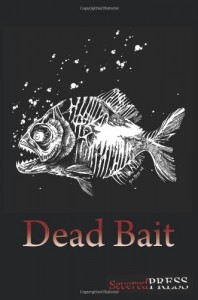 Should you always write to be paid, or should you (at least sometimes) write for free? Here I’m talking about complete fictional stories, not blog articles or story excerpts.
Should you always write to be paid, or should you (at least sometimes) write for free? Here I’m talking about complete fictional stories, not blog articles or story excerpts.
The answer for you will depend on your situation. I’ll offer some guidance, some basis on which you can make your decision.
There are those who say you should never write for free, and their reasons are compelling.
- Writing is effort, and you deserve to get paid for it. In one sense it does look like writers are producing something from nothing, but the product is something, after all. Considerable effort went into the product, and work should have its compensations. Of course, payment is more related to value as perceived by the purchaser than to the effort expended by the author.
- You have to eat. How much of your life’s precious time do you really have to expend on doing stuff that has no return?
- Other authors get paid; why shouldn’t you? Let’s face it—all else being equal, getting paid for your work beats not getting paid. Since there are readers willing to pay for well-written stories, why shouldn’t you be one to meet that need, and reap the benefits?
- Readers perceive free fiction must be inferior. You get what you pay for, the old saying goes. If you give away your stuff, they’ll think it can’t be any good. No matter your personal reasons for writing for free, you can’t directly control this aspect, since it’s a reader perception issue. Perhaps slowly over time you’ll build an audience as readers realize your stories are high quality despite being free, and tell their friends.
Still, there are valid reasons for giving away your stories, and some of these may apply in your case.
- Name recognition. Given that today’s readers rarely choose stories from authors they don’t know, you need to give an incentive for them to know you. From there you can build an audience willing to pay for your work.
- Writing as a hobby. Some folks associate income with work, and work with drudgery. They associate the word ‘hobby’ with fun, and don’t want to contaminate their fun hobby by turning it into a chore.
- Less chance of rejection. I think the so-called “for the love” markets are easier to break into. However, this reason for giving away fiction is starting to become obsolete in an age when writers can skip the editor/publisher route entirely and publish eBooks directly, and charge for them.
- Writing as a favor. Perhaps you’ve become friends with an editor or publisher, and perhaps you owe them a favor for some kindness they’ve shown you. Nothing wrong with sending them a story for which you ask no payment.
- For charity. Here the reader still pays to read your stuff but proceeds go to some deserving assistance organization rather than to you. Nothing wrong with that.
You’ll have to weigh the pros and cons depending on your particular situation. In my own case, I have written a couple of stories and submitted them to a “for the love” market. I hope to include them in an anthology that I’ll charge for, so maybe I’ll make some money from them. I wrote a story intended to go into a different anthology for which proceeds would go to charity. That anthology fell through, though, so I will attempt to market that one and get paid for it. Generally, now, I write for money.
Please let me know what you think about writing for free, and what your experiences have been. Of course, you can always read—for free—the blog entries of—
Poseidon’s Scribe













